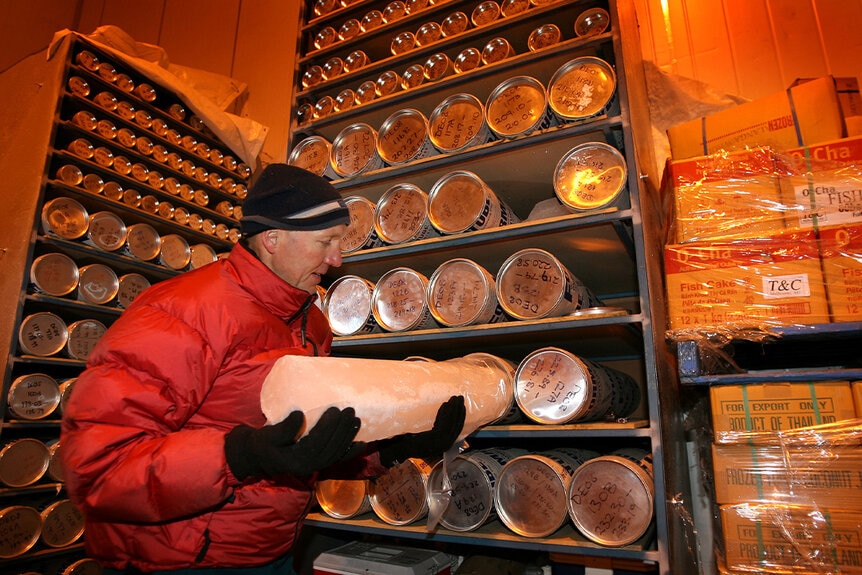Scientists in Antarctica are Hunting for Ancient Ice
Antarctic ice captures tiny bits of ancient air, revealing our planet's atmospheric past.

In 1982, a team of Antarctic explorers stumbled upon an ancient alien spacecraft buried in the ice for 100,000 years. It contained a still-living extraterrestrial with the ability and desire to assimilate and transform into other living organisms. No one can be trusted, and anyone could be The Thing.
In the real world, teams of scientists are currently scouring the Antarctic continent in search of even older buried objects: preserved layers of ice dating back millions of years. If scientists are successful at finding the very old ice, it could reveal more about our planet’s past and help us build a road map for the future.
The Hunt for the World’s Oldest Ice Core Samples
Researchers are spending weeks at a time camping out on the Antarctic ice, searching for the oldest ice samples ever found as part of the COLDEX (Center for Oldest Ice Exploration) project. As fat flakes of snow fall on the Antarctic continent they inevitably trap tiny bubbles of air between them. Then, because it’s so cold, the snow doesn’t melt. Instead, it gets compacted beneath the next layer of snow, permanently trapping tiny samples of the air inside.
RELATED: Ice Cores Reveal History of Incredibly Violent Volcanoes
Much like how rock layers tell us the Earth’s geological story backward through time, or how the rings of a tree reveal information about the growing conditions for each year it was alive, ice core samples reveal the planet’s atmospheric history through the tiny breaths of air they trap in the world’s coldest places.
The oldest continuous ice cores – those with unbroken records in nice, neat stacks – go back about 800,000 years. Beyond that, things get a little messy. Over time, as new layers of ice build up, older layers get pushed down and out toward the edges of the continent. Eventually, they hit the coast and break off or melt back into the ocean. This process takes millions of years but it puts an upper limit on how far back scientists can drill into the ice. Moreover, it makes older ice cores harder to deal with because they aren’t so nicely organized. The tree rings are still there, but the tree has been all chopped up, so to speak.
As old ice moves toward the fringes, it sometimes gets pushed back toward the surface where it gets smooshed between younger layers. The trick is knowing where to find it.
Two other teams of researchers, from Europe and Australia, are also hunting for old ice in different parts of Antarctica. The goal is to find a continuous ice core going back at least 1.5 million years and even older bits of scattered ice dating back several million years. When we peer back that far, we find a world with higher greenhouse gas concentrations than even today. Getting our hands around the planet’s climate – trapped beautifully in Antarctic ice – could help us get a better handle on our climate future.
Just so long as they don’t accidentally uncover an alien spacecraft sent to destroy humanity. Catch John Carpenter’s The Thing, available now from Universal Pictures!

















